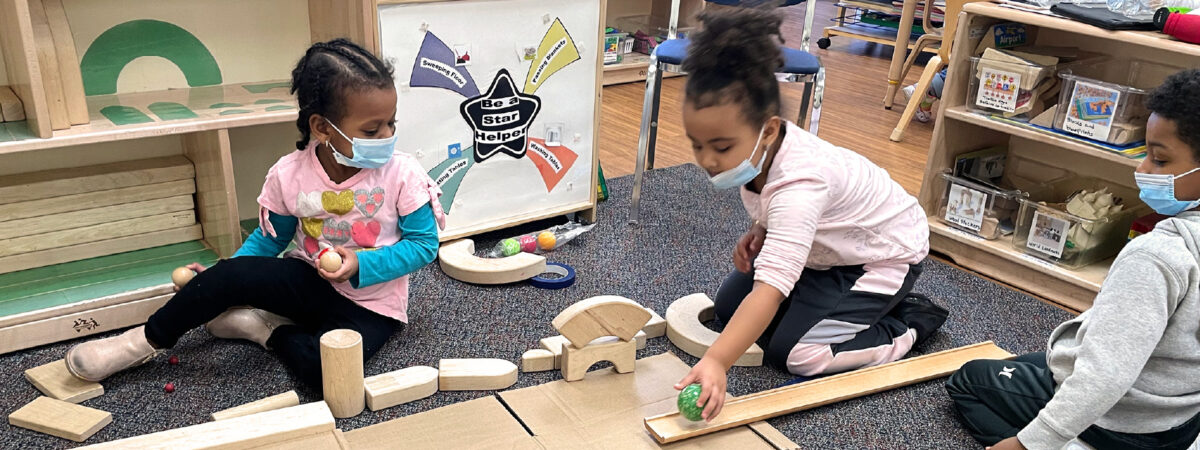
When we walked into the preschool classroom, our partner teacher excitedly greeted us, “Come in, come in. Come take a look at these shadow artists!” Lights were off and lively music was playing. “Turn it out, to the left, take it back now y’all, five hops this time, right foot let’s stomp, left foot let’s stomp, right foot again, left foot again, right foot let’s stomp, left foot let’s stomp—freeze! Everybody clap your hands!” Children were moving to the beat of the song, following the lyrics’ instructions, all while watching their shadows on the wall. It was pure joy. Later that morning, during small group time, teachers sat with a group of children in front of a puppet theater they had created. Children behind the theater used flashlights and paper puppets to narrate a story. The teachers and other children sat attentively in the audience. One of the teachers helped to guide the children’s thinking as she asked “OK, how are you going to make the shadows? How can you make them bigger? What about smaller?”
One can observe these activities and easily notice their playful nature, children’s physical movement, the focus on art and creativity. But central to these activities is also science! Children learned about light and shadows—how shadows are made and how they change when objects or light sources are moved. The activities also involved math and engineering. Children counted and followed visual spatial directions (e.g., left, right, forward, backward). And the shadow theater had been carefully designed, created, and revised as a class engineering project.
A recent report by the National Academies of Science, Engineering, and Medicine calls attention to the need to promote science early in childhood. While the report highlights how meaningful science activities can help children make sense of the world around them and strengthen not only their later STEM learning but also their learning broadly, it calls attention to the fact that many preschool children, especially those in historically excluded communities, have few opportunities to engage in STEM as part of their preschool experience. Early childhood education teachers have interest in and find science valuable for children, but have limited access to resources to support them in integrating science into their classrooms.
With funding from the National Science Foundation, our team sought to address this challenge by co-designing a program that could be feasibly implemented across school and home to promote science learning. To ensure the program centered the experiences and assets of children and families and the strengths and needs of preschool educators, the team included parents from historically excluded communities and teachers in public preschool programs. The team also included designers with experience in early childhood curriculum and digital media and researchers with expertise in early STEM learning in formal and informal settings.
The shadows classroom experience described above was one of many activities co-designed and evaluated as part of the project. The resulting program, Early Science with Nico & NorⓇ, includes a teacher guide with circle time, small group activity and learning center ideas to promote science, as well as support materials for teachers and a family guide to connect home and school learning. The activities were co-designed to fit the ecology of classrooms and homes and to link science with other key areas of learning such as math and engineering. Science provided a meaningful context for children to practice math and engage in engineering. For instance, by observing and gathering data to understand how plants grow over time in the Plants Unit, children were able to meaningfully practice important measurement skills. Math and engineering also strengthened science activities. For example, as children designed and tested their ramp pathways in the Ramps Unit, they developed an understanding of how different variables affect how things move.
Teachers from four preschool programs around the country participated in a field study to explore the promise of the program. We observed the ways in which teachers brought these activities to life and noticed the opportunities children had to engage with science, math, and engineering.
"I liked that one because they had to do problem solving – what shadow will be able to hide puppy from the sun. I really did enjoy Puppy Park."
- Participating Teacher
To learn more about this program and related research, check out this flyer. Visit first8studios.org to access the Teacher Guide and try an activity yourself.